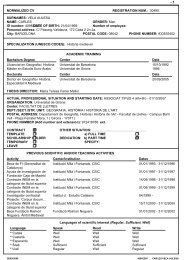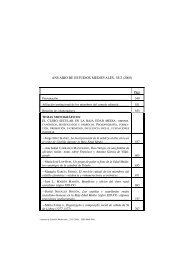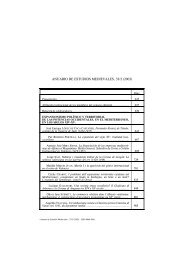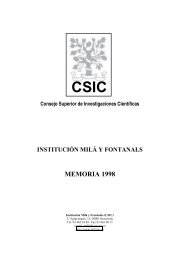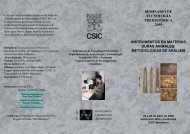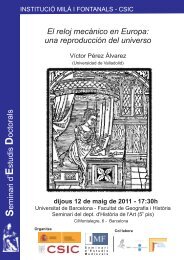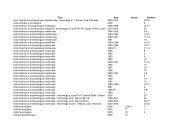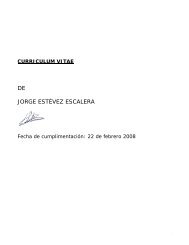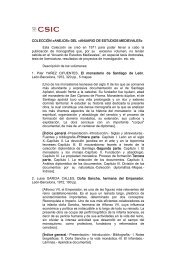El cos: objecte i subjecte de les ciències humanes i socials El ...
El cos: objecte i subjecte de les ciències humanes i socials El ...
El cos: objecte i subjecte de les ciències humanes i socials El ...
Create successful ePaper yourself
Turn your PDF publications into a flip-book with our unique Google optimized e-Paper software.
RESUMS / RESÚMENES / ABSTRACTS:<br />
_______________________________________________________________<br />
28.01 matí/mañana/morning<br />
SESSIONS PLENÀRIES/ SESIONES PLENARIAS/ PLENARY SESSIONS:__<br />
Sala d’actes <strong>de</strong> l’IEC:<br />
<strong>El</strong> cuerpo femenino: genealogías <strong>de</strong> libertad<br />
Milagros Rivera<br />
Universitat <strong>de</strong> Barcelona<br />
Me acercaré a la historia <strong>de</strong>l cuerpo teniendo en cuenta el hecho casual pero necesario <strong>de</strong> la<br />
sexuación humana. Estudiaré algunas invenciones simbólicas para <strong>de</strong>cir el sentido libre <strong>de</strong>l ser<br />
mujer en la Europa cristiana, particularmente en la medieval.<br />
Reconstructing the prehistoric body<br />
2<br />
Claudine Cohen<br />
École <strong>de</strong>s hautes étu<strong>de</strong>s<br />
en sciences socia<strong>les</strong>,<br />
Paris<br />
Prehistorians have invented indirect methods in or<strong>de</strong>r to know the appearance, consciousness,<br />
use and meaning of the Human body in prehistoric times. For a very long part of the<br />
Palaeolithic, palaeontologists <strong>de</strong>al mostly with rare and scattered bones, from which they<br />
attempt to reconstruct anatomically the skeleton, figure, gait, sexual dimorphism, and other<br />
features such as musc<strong>les</strong>, hair and skin color which are even more hypothetical, in or<strong>de</strong>r to<br />
account for body adaptations and evolution in extinct human species.<br />
On another hand, technological experimentations provi<strong>de</strong> ways to approach body<br />
consciousness through the un<strong>de</strong>rstanding of toolmaking and tool use and through the<br />
reconstruction of gestures and the “chaîne opératoire”, while footprints and hand stencils in<br />
Upper palaeolithic ornated caves can give direct evi<strong>de</strong>nce of physical human presence and<br />
intention.<br />
For the more recent periods, burials and figurative art provi<strong>de</strong> insights into body consciousness,<br />
and into the social uses and symbolic meanings of the human body in these ancient times.<br />
From the Atlantic shores to the Don Valley, from the Gravettian to the Magdalenian, upper<br />
Palaeolithic sites have yiel<strong>de</strong>d an abundance of sculpted feminine figures, naked bodies with<br />
no facial features and opulent shapes, or more slen<strong>de</strong>r figures. The Human body is also<br />
metonymically represented by genitals that often coexist with more realistic representations.<br />
Such body states as pregnancy and sexual postures seem to be represented with predilection.<br />
Through the attention to these different features, prehistoric sciences find access to the human<br />
body, not only as an anatomical, but also as a major cultural reality. However it should not be<br />
forgotten that this knowledge of our ancestors’ bodies and its social uses is indirect, highly<br />
hypothetical and often influenced by assumptions and prejudices




